Heaven's Queen, Hell's Prostitute
Meet the supreme deity and secret practices of the ruling class's antinomian cult.
We live in an upside-down world. Depravity is celebrated, corruption sanctified, and while loyalty and obedience to a government is demanded, it never reciprocates. The people in charge live a libertine life in not-so-secret, and the average person is left scratching their heads, asking “How on earth did all this come to pass?”
The answer lay at the very bottom of a particular rabbit hole, one you may not have thought to look in. You also may have looked, and think you know the truth about the god of the elites, but you’re in for a surprise. You’ve learned from a previous series of mine that the god of the ruling class is actually a goddess. But even this, they do not do in its correct form and have inverted her worship just as they’ve corrupted everything else they get their demented hands on.
You must understand that, for a very long time, there exists a religious persuasion that doesn’t see piety, faith, and moral rectitude as virtues. These orthodox practices do not interest these people, who instead follow heterodoxy in pursuit of salvation. This is what’s known as the Left Hand Path in occult circles, and Antinomianism in religious discussions. Groups following this hedonistic persuasion have appeared throughout human history, such as the Frankist Jews of the 18th and 19th century, who continued the Sabbatean heresies of the 17th. Also noteworthy are the Tantric Sex cults that began in 9th century India, who call this path Vāmācāra and continue to operate to this day.
In India this group appears to have emerged alongside the Hatha Yoga movement, building strange and unique temples throughout India dedicated to Yoginis, where their sex rituals were performed. One of these sex rituals is described in chapter 40 of the Matsyendrasaṃhitā, a Hatha Yoga text published around the same time by Matsyendranātha. While the original intent was likely that these rituals would be performed by consenting adults, it is clear it was also done to children.
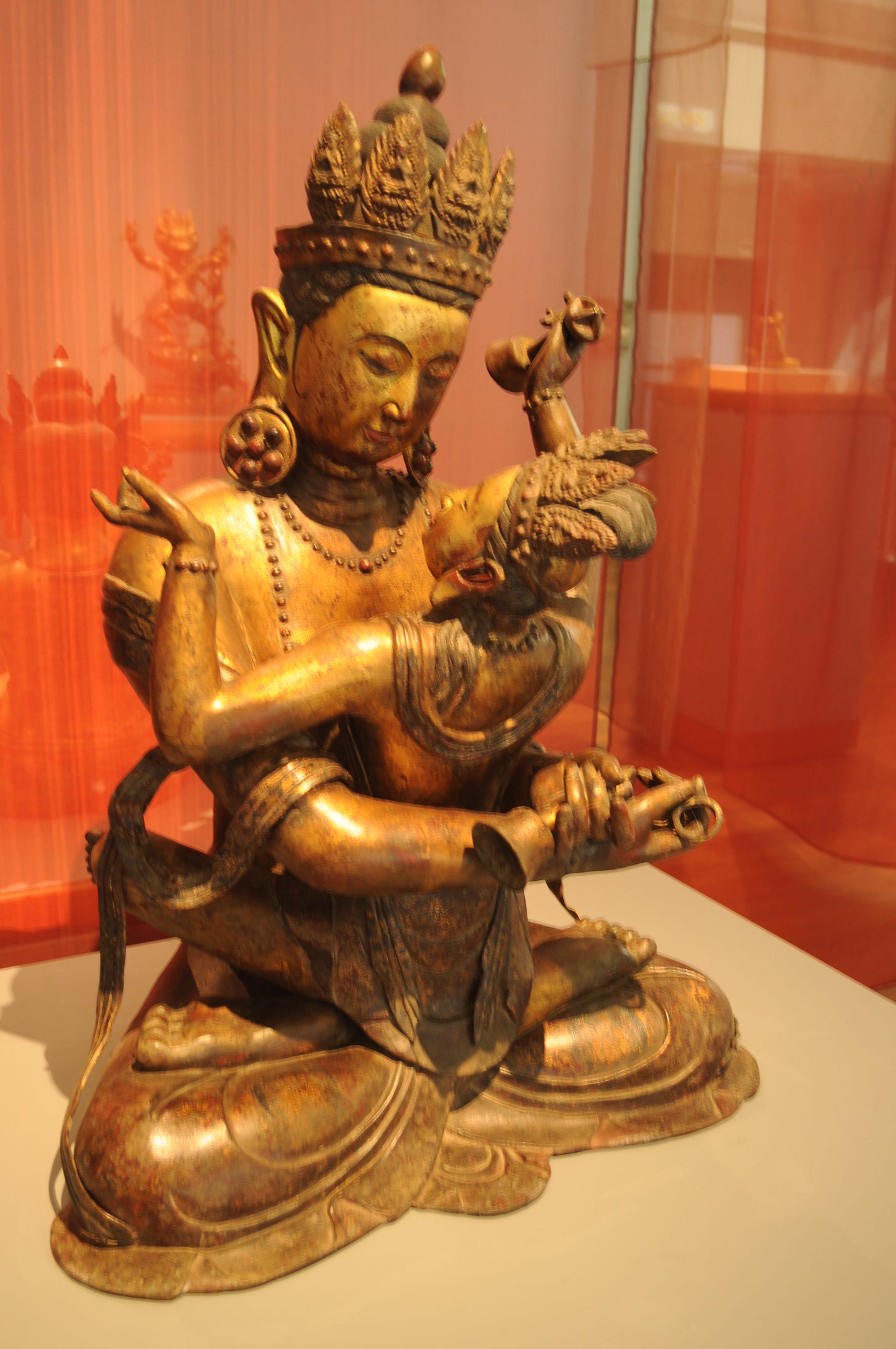
Temple prostitution continues to this day in India, where girls aged 6-7 are offered as a sacrifice to the temple, who then uses her as a sex slave and prostitute. After reaching maturity she is ejected from the temple with nothing and no-one willing to help her, lest they dilute their own standing in the community. In the Devadasi system, the goddess being invoked here is a minor one called Yellamma, but the Yogini cult invoked the Devi herself, the wife of Shiva, Shakti.
For over a thousand years this cult operated freely in India, and then the British drove it underground. There it continues, along with a myriad other antinomian practices believed by the ruling elites to bring them closer to enlightenment. However, a millennia is but a heartbeat in the lifespan of human history and these people have been around for far longer than that.
In the Beginning
Six thousand years ago the city of Uruk was founded. It was the first city built by human hands acknowledged by archeologists (Taş Tepeler, and Atlantis, notwithstanding). It was created after two neighboring settlements merged together. Each settlement had its own temple district, one dedicated to the God of Heaven, An, and the other to the Queen of Heaven, Inanna. Her name was likely derived from the Sumerian phrase nin-an-ak, which literally translates to “Lady of Heaven.”
This was a very, very special place, for here we have the earliest examples of writing (cuneiform) as well as megalithic architecture. These people were some of the most sophisticated and inventive humans on the planet and we should not ignore how they perceived and worshiped their gods. Uruk ultimately chose Inanna over An to be the patron deity of the city, and this is reflected in the many stories they told about her, which you must learn yourself if you are to decipher the true identity of the goddess. Her credits are legion, and she possesses more epithets than any other Mesopotamian deity.
Origin Stories
How this goddess came to be is almost as important as her deeds during the height of her power. Read on for a summary of her major legends, as told in ancient Sumer.
Enki and the World Order
When the universe was just being formed, the god Enki was charged with dividing powers over the earth amongst the other gods. After the task is complete, Inanna approaches Enki and complains that she did not receive an apportionment of powers. Enki replies that her father, An, had already assigned her her powers and that there was no need to assign her any others.
This story shows us that Inanna stood apart from the other gods in the Mesopotamian pantheon, in the minds of Sumerians. Why she was so special and apparently favored by An is something you’ll learn as we proceed through this article.
Inanna and the Huluppu Tree
In this myth Inanna is still young and not yet stable in her powers. It begins with a huluppu tree, possibly a willow, growing on the banks of the Euphrates. It gets washed away by a storm and Inanna rescues it, wishing to plant it in her garden at Uruk and to make a bed and throne out of its wood when the time is right.
However, three interlopers come to inhabit the tree after Inanna plants it; a snake, Anzu bird, and the demoness Lilith. She recruits the help of Gilgamesh, who kills the snake and evicts the other two. The tree is felled and constructed into her bed and throne. Inanna gifts Gilgamesh with a drum and drumsticks made from the same wood as his reward.
This is the first story of Inanna’s life that may seem familiar to you. A tree cared for by a god, inhabited by a snake. Hang on, because the similarities are just getting started.
Inanna and Utu
Now in adulthood, Inanna asks her brother, the sun-God Utu, to take her into the underworld. There she says she will find a tree whose fruit will reveal all the secrets of sex to her. Utu complies, Inanna eats the fruit and becomes knowledgeable.
Here Inanna continues the theme of a sacred tree, and this time eating its fruit imparts special knowledge. This motif was repeated wholesale in the story of the Fall of man from the Book of Genesis.
But wait, there’s more!
Inanna Prefers the Farmer
In this tale Inanna’s brother Utu reveals that it’s time for her to marry. At first Inanna prefers a farmer named Enkimdu. The other candidate, the shepherd-god Dumuzid, enlists the help of Utu and together they convince Inanna that he is the superior suitor.
The text is famous for the erotic language used by Inanna, who asks repeatedly “Who will plow my vulva?” Agriculture and human sexuality are linked with a great deal of innuendo from all parties. The marriage is consummated and this union becomes the known as the hieros gamos, an ancient sex ritual and basis for all the others, where the King of Sumer and High Priestess of Inanna would re-enact their copulation on an annual basis. The purpose of this ritual was to bestow the male participant with the goddesses powers and authority, earning him the right to rule as her husband and King.
This story is mirrored by that of Cain and Abel in the Bible, where God chooses between a shepherd and a farmer.
Expanding Powers
Now in adulthood, Inanna embarks upon a series of more daring adventures. The result of which is her consolidating more power, bringing her into confrontation with other powerful gods.
Inanna and Enki
In this myth, she travels from her own city of Uruk to Eridu to meet Enki, god of water, wisdom and creation. Enki is glad to see her, and invites her into his home for a meal. Inanna then challenges him to a drinking competition, and the games begin. However, Inanna tricks Enki into thinking she’s actually consuming the alcohol. She stays sober, while Enki eventually gets blackout drunk.
While inebriated, Inanna convinces Enki to turn over the mes to her. These are sacred items that each embody an aspect of civilization. These aspects were very diverse and the mes listed in the poem include abstract concepts such as Truth, Victory, and Counsel, technologies such as writing and weaving, and also social constructs such as law, priestly offices, kingship, and prostitution. The mes were believed to grant power over all the aspects of civilization, both positive and negative. She also convinces Enki to give her the Boat of Heaven, to ensure her safe return back to Uruk.
After coming to, Enki realizes what had happened. Enraged he sends seven waves of monsters after Inanna who, with the help of her attendant Ninshubur, defeats them. Enki eventually relents, realizing the mes are well-protected by their new custodian.
Here Inanna’s powers in battle are prominently displayed, as well as her guile, ultimately gaining patronage over all human culture.
Inanna Takes Command of Heaven
In Uruk there lay the Eanna District, an area of the city where some of the most important human achievements in history were made. The name translates to “House of Heaven” and this story explains how the temple of Eanna came to be dedicated to Inanna.
It begins with Inanna’s lament to Utu that the temple of Eanna is not within her domain and she resolves to claim it as her own. Inanna travels to her father An, who is shocked by her arrogance, but nevertheless concedes that she has succeeded in her petition and that the temple of Eanna is now her domain.
It is uncertain whether or not the Eanna temple was ever dedicated to any god other than Inanna, and this tale may be illustrative of a transfer of power from An to Inanna. More on that in the last section of this report.
Crime and Punishment
Now at the height of her power, Inanna embarks upon a series of deeds that demonstrate her strength and ferocity towards those who cross her. She’s audacious and bellicose in the face of danger, no doubt contributing to the great admiration she received in the ancient world.
Inanna and Ebih
This myth begins with Inanna’s travels around the world, until she comes across Mount Ebih and becomes infuriated by its glorious might and natural beauty, considering its very existence as an outright affront to her own authority.
She is warned by An not to attack the mountain, but she does anyways, destroying it utterly. This incredible feat is only ever accomplished by one other Mesopotamian god in the poem Erra and Ishum. There the gods are astonished by Erra’s power and praise his greatness.
That Inanna’s might is now irresistible, and she can destroy anything with impunity, appears to be what the story is meant to communicate here. Her banner was flown high by the conquering Akkadians, who called her Ishtar, and this seems to have been a propaganda piece meant to intimidate neighboring city-states who planned to resist “The Dynasty of Ishtar,” as the Akkadians called themselves. More on them later.
Inanna and Shukaletuda
This story begins praising Inanna as the planet Venus, which she is deeply linked to. In fact, the Sumerians worshipped her as both the morning and evening star, which they correctly understood, even 6,000 years ago, as this inner planet. It then introduces us to Shukaletuda, a gardener who is terrible at his job. Everything dies, except for a poplar tree. To his amazement, Inanna takes rest under this tree and falls asleep.
Shukaletuda proceeds to undress and rape the sleeping Inanna. Upon waking and realizing what had happened, Inanna is determined to bring her attacker to justice. In a fit of rage, Inanna unleashes a horrible plague upon the Earth, turning water into blood. Not finding her assailant, she unleashes yet more until he is driven out of hiding. Inanna finally locates Shukaletuda, who vainly attempts to invent excuses for his crime against her. Inanna rejects these excuses and kills him on the spot.
While literary analysts have focused on the movements of Inanna in the story possibly being linked to the movements of Venus, another lesson is important here. This goddess is no fan of forced intercourse, handing down the ultimate penalty to those who offend her. The similarities to the Biblical plagues unleashed on Egypt are also impossible to miss.
Epic of Gilgamesh
In this, one of the earliest literary epics ever written, Gilgamesh and his friend Enkidu go on a quest to eliminate the forest guardian, Humbaba. So impressed by this feat of strength and combat skill was Inanna that she paid Gilgamesh a visit and demanded he become her consort. He refuses in the most unceremonious terms.
Enraged, Inanna petitions her father An to give her the Bull of Heaven, that it might slay Gilgamesh and Enkidu for their insolence. She threatens to raise an army of the dead, who will outnumber and consume the living, if she is refused. An reluctantly agrees and the Bull is sent to attack. Gigamesh and Enkidu instead slay the Bull and begin mocking Inanna. She retreats and assembles all the prostitutes of Uruk to mourn over the corpse of the slain Bull.
Later in the Epic, Gilgamesh encounters Ziusudra (Utnapishtim or Atrahasis in Akkadian), the Sumerian flood hero, and analog to the Biblical Noah. Utnapishtim tells Gilgamesh the story of the Great Flood, sent by Enlil, and how he was informed by Enki to build a boat that would rise with the waters and keep his family safe. He explains that Inanna wept for the destruction of humanity as the Flood came. Later, when the waters subsided, Inanna appeared to Utnapishtim and explained that Enlil never informed the other gods of what he was about to do. She swears she will never allow Enlil to destroy humanity again, offering her lapis lazuli necklace as proof of the covenant.
Here we see quite clearly that Inanna is a friend to humanity, like Enki. By excluding Enlil from her proclamation, we also see the beginning of a rift forming between her and this pernicious god. Like the god of the Bible, she also makes a pact with the story’s hero to never again destroy the world.
Death and Resurrection
The theme of a dying and resurrected god is ubiquitous throughout human history. Many cultures over the millennia have had at least one god that either dies and is resurrected, or takes a one-way journey into the Underworld and miraculously returns. As far as we currently know, this literary motif began with Inanna, who did them both.
Inanna’s Descent Into the Underworld
With the Bull of Heaven slain, Inanna resolves to enter the Underworld and pay respect to her sister, Ereshkigal, Queen of the Underworld. Inanna refers to the Bull as Gugalanna, the husband of Ereshkigal, and so the journey and what happens next make a lot of sense. Any journey into the Underworld is fraught with risk and usually a one-way trip, so she informs her attendant Ninshubur to plead with the deities Enlil, Nanna, An, and Enki to rescue her if she does not return after three days.
After donning her best attire and symbols of her authority, she ventures through the seven gates of the Underworld. Arriving at the first gate, she once again threatens to raise the dead to consume the living if she is not granted entrance. The rules are such that she must remove an article of clothing to pass through each gate. Inanna complies, arriving before her sister naked. The seven judges of the Underworld then spoke to the disempowered Inanna angrily, transforming her into a corpse and hanging her on a hook on the wall.
Three days pass and Ninshubur does as she was instructed. She pleads with the other gods to rescue Inanna, but only Enki agrees. He was troubled because as soon as Inanna left for the Underworld, procreation of humans and animals completely stopped. Without her influence, all life would expire. Enki creates two sexless creatures named gala-tura and the kur-jara from the dirt under two of his fingernails. They go to Ereshkigal and find her in great pain. She offers them whatever they want, including life-giving rivers of water and fields of grain, if they can relieve her, but they refuse all of her offers and ask only for Inanna's corpse. The gala-tura and the kur-jara sprinkle Inanna's corpse with the food and water of life and revive her.
Inanna makes her way out of the Underworld, but this time accompanied by demons known as gallas, who insist someone must take Inanna’s place in the Underworld. They try three times to take three different attendants of Inanna, but she refuses them each time because they were all in mourning for her. Then they come across Dumuzid who, instead of mourning the loss of Inanna, is enjoying himself under a tree with a group of courtesans. Displeased at his utter lack of grief or loss, Inanna decrees that he will take her place, and the gallas drag him down to the Underworld.
The loss of Dumuzid eventually weighs heavily on Inanna as well as his sister, Geshtinanna. They plead with Ereshkigal and a deal is reached where Dumuzid will spend half the year with Ereshkigal in the Underworld, and the other half in Heaven with Inanna, while Geshtinanna takes his place.
The themes in this myth were so popular that they were re-created by nearly every other culture and transferred to both male and female gods alike. Nevertheless, this is the earliest literary example of a god dying and being resurrected three days later.
Defiling Divinity
Around 4,300 years ago, Sargon of Akkad conquered the city of Uruk, marking the beginning of the Akkadian Empire. Control of Uruk was pivotal for Sargon in establishing the world’s first empire. Seizing the center of Inanna’s worship would cement his rule in the minds of the conquered Sumerians.
Sargon, king of Akkad, overseer of Inanna, king of Kish, anointed of Anu, king of the land, governor of Enlil: he defeated the city of Uruk and tore down its walls, in the battle of Uruk he won, took Lugalzagesi king of Uruk in the course of the battle, and led him in a collar to the gate of Enlil.
— Inscription of Sargon (Old Babylonian copy from Nippur).
The symbolism of the “Governor of Enlil” leading the king of Uruk (Inanna’s husband) in a collar to the gate of Enlil should not escape you. Here was the representative of Enlil conquering Inanna, taking possession of her and her royal powers. Sargon declared himself the husband of Inanna, began emphasizing her aspects as a war goddess, and exported her cult to great reception across the Akkadian Empire and beyond.
It would be easy to say that the inversion of goddess worship began here, but in truth it had probably begun before this goddess was even known as Inanna. Recall the demons from the underworld called gallas, this also happens to be what Inanna’s priesthood (as opposed to the priestesses) in Sumer called themselves. While many of them were heterosexual men with wives and children, others were homosexuals and transgenders that engaged in ritual group sodomy events. As time progressed, this minority group of men eventually became the leading feature of temples to Inanna/Ishtar. As the Akkadians exported the worship of Ishtar, so too did the Gala priesthood, becoming known as the Enaree in Scythia and the Galli in Phrygia.
A secret priesthood that engages in ritual non-procreative sex and that rapes and murders the fruits of such an act (children), would be a powerful message sent by Enlil to Inanna that he is desecrating everything she stands for. Indeed, this is what these priests have been doing for millennia. Enlil is well-known for his hatred of humanity, and what better way to desecrate the goddess of fecundity, loved by all, and who certainly would herself proclaim “Be fruitful and multiply”?
This priesthood also celebrated the consequences of their abuses and inversions, by praising homosexuality and men transitioning into women. You see, it was discovered long ago by these people that sexually abusing prepubescent boys can sometimes cause their sexual drives to lock onto the wrong gender when they come of age, and can lead to all manner of confusion and abomination. The further into the delusion you go, the more you are elevated to a class of divinity within their ranks, beyond criticism, and given nearly unfettered access to other children.
Inanna’s Symbols
Being able to identify the symbols of Inanna is more likely to lead you into a den of galas than any genuine practitioners of Inanna’s rites. You should nevertheless know when reference is being made to her so that you can decide for yourself what sort of person you’re dealing with.
Stars
As the Queen of Heaven, Inanna’s celestial representation is in the form of nearly every rendering of a star you’ve ever seen. Most popular is the eight-pointed star, however she sometimes appears as a six or five-pointed star. The latter being the star most commonly associated with Inanna’s planet, Venus. The six-pointed star, today called the Star of David despite there being nothing Jewish about it, may surprise you as also being a symbol of the goddess. Yet, it is found in a temple of Dionysus on the island of Cyprus, where many Phoenician goddess worshippers could be found, next to yet another symbol that might shock you.
Yes, the swastika too is likely another rendering of an asterism meant to invoke the goddess Inanna. Swastika’s were found all over the city of Uruk and the surrounding area, and so its potential link to Inanna cannot be ignored.
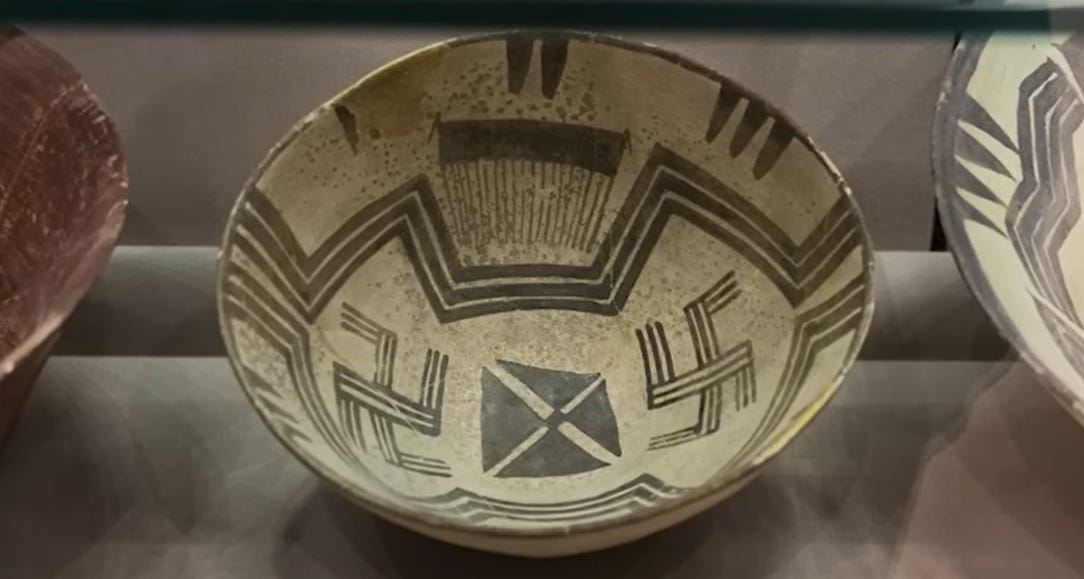
Revisiting the eight-pointed star, we also note this symbol is associated with other popular goddesses like Lakshmi, where each point represents a kind of wealth one can attain in life.
Lions
The early Mesopotamians, as with many cultures that followed, regarded lions as a symbol of power and authority and so it was natural that Inanna would be associated with these. In many depictions she is shown sitting or standing on a lion, or holding one on a leash. A modern example of Inanna’s inspiration would be the Hindu god Durga, one of the principal aspects of Devi. Durga shares many of the same attributes as Inanna, being associated with protection, strength, motherhood, destruction, and wars. She is almost always pictured riding either a lion or tiger.
Doves
Doves are another animal featured prominently alongside many illustrations of Inanna, and the Sumerians even believed she could take the form of a dove. As Inanna moved westwards and evolved into the Greek Aphrodite, her doves and other symbols went with her.
Owls
The Burney Relief is a 4,000 year-old depiction of Inanna that prominently links her to the owl, a symbol of wisdom. While wisdom was typically associated with Enki, Inanna’s procurement of the mes probably meant that she would now be associated with it as well. In Greece, we saw this materialize in the goddess of wisdom and war, Athena.
Roses
Another symbol Inanna shares with Aphrodite and other goddesses of love are roses. The rose itself being a symbol of the female vulva. An architectural design feature you’re no doubt familiar with is the rosette, and it should be no surprise they draw their inspiration directly from Inanna.
Her Hidden Identity
As we’ve learned from the revelations published in The Apocalypse of Yajnavalkya, the ancient gods of the Near-East and Mediterranean were the Atlantean royal family. An ancient source for their story has been in the hands of modern man for over a millennia, and yet you’ve been told Plato was the only one.
But since we have made mention of the Atlanteans, we believe that it will not be inappropriate in this place to recount what their myths relate about the genesis of the gods, in view of the fact that it does not differ greatly from the myths of the Greeks. Now the Atlanteans, dwelling as they do in the regions on the edge of the ocean and inhabiting a fertile territory, are reputed far to excel their neighbours in reverence towards the gods and the humanity they showed in their dealings with strangers, and the gods, they say, were born among them.
—“Biblioteca Historica”, by Diodorus Siculus, Book III, Chapter 56
Diodorus provides a more down-to-earth account, invoking no gods in his recounting of the founding family of the first great civilization to ever exist on this planet. Instead of the god Poseidon and Cleito being the founders, it was a man named Uranus and his wife, Titaea.
The People of Heaven and Earth
Atlanteans practiced a form of stellar ancestor worship, and when important people died they named a part of the cosmos after them. Being the founders, Uranus became the sky or heavens themselves, and Titaea was honored as the earth, becoming Gaia. This union of heaven and earth is ubiquitous in creation myths and is forever embedded in the Sumerian/Akkadian word anu-na-ki, meaning the “People of Heaven and Earth.” Where An/Anu is the Sumerian word for heaven, and Ki the word for earth, it was how they referred to members of the Atlantean royal family. The Greeks knew Poseidon as “Husband of the Earth,” and now you can plainly see why.
Together, Uranus and Titaea bore numerous sons and daughters. However, one daughter stood apart from the rest.
Of these daughters Basileia, who was the eldest and far excelled the others in both prudence and understanding, reared all her brothers, showing them collectively a mother's kindness; consequently she was given the appellation of "Great Mother"; and after her father had been translated from among men into the circle of the gods, with the approval of the masses and of her brothers she succeeded to the royal dignity, though she was still a maiden and because of her exceedingly great chastity had been unwilling to unite in marriage with any man.
—“Biblioteca Historica”, by Diodorus Siculus, Book III, Chapter 57
Almost immediately it is clear Inanna is the Atlantean Basileia, eldest daughter of founders Uranus and Titaea. And there is much more to suggest that this woman was the true inheritor of the entire Atlantean kingdom. The Atlantean royal palace, or citadel, was called “Basileia” according to Plato in Critias. It also means “The Kingdom of God” (basileia tou theou), or Kingdom of Heaven, in Christian theology. As the eldest she inherited the throne of Atlantis directly from her father and singularly ruled the entire Kingdom. She earned the title of “Great Mother” by rearing all the other ‘gods’, one that was subsequently stripped from her, though never in its entirety.
To the queen of the gods, into whose hands are delivered the command of the great gods.
—“Prayer of Assurnasirpal son of Šamširaman” c. 3,800 ybp
Wanting a line of successors, she married Hyperion (“He that walks on high”), and together they produced Helios (Sun) and Selene (Moon). This close relation to the sun and moon continued with Inanna, whose father is sometimes the moon god Nanna (not An), and whose brother is the sun. Here the connection is even stronger, as she is the mother of both.
Betrayed and Destroyed
Greedy for power, some of her brothers conspired and murdered Hyperion and Helios, breaking the royal line of succession. Despondent, Selene committed suicide. With her immediate family gone, Basileia abdicates the Atlantean throne and goes into a self-imposed exile, traveling the Mediterranean and spawning numerous cults devoted to her in pre-Flood times. Only then is Atlantis divided into ten sub-kingdoms and the story of the brothers Atlas and Cronus begins. It continues describing Cronus as a tyrant and hints at a possible war between him and his own son, Zeus.
With her true identity revealed, we can now see the many parallels between Inanna and Basileia. Her taking command of “Heaven” can now be properly understood as her ascension to the throne of Atlantis after Uranus had passed. We also see the beginnings of strife between her and Cronus in the Epic of Gilgamesh, with her criticism of and exclusion of Enlil, and why the followers of Cronus (also known as Saturn) might want to destroy her memory.
And so they have, gradually stripping Basileia of her more dignified traits and slowly reducing her to an object of lust for chronically stupid men.
When [Basileia] was aroused from the swoon she recounted to the common crowd both the dream and the misfortunes which had befallen her, asking that they render to the dead honours like those accorded to the gods and asserting that no man should thereafter touch her body.
—“Biblioteca Historica”, by Diodorus Siculus, Book III, Chapter 57
What should be evident to you now is that the sex rituals being performed by the ruling elites today are simply the same old performance that conferred royal authority on the mate of Basileia who, by his marriage to her, ascends to the Atlantean throne as king. As the goddess of love and fertility, the organized ritual murder of infants can only be meant to desecrate her even further.
Conclusion
Make no mistake, the ruling class are no true worshippers of any goddess. They are a Saturnian cult that has been covertly inverting every institution they can infiltrate, then donning the hollowed-out edifice as a disguise. Of all the gods, only Cronus is the murderer and devourer of children. His worship is known and proudly admitted by his followers to be of antinomian design, who will even call themselves “anarchists” or “freedom fighters” while lending their time and resources to the expansion of State power, or as they commit atrocities against children. They have forever been the enemy of humanity, possessed by a hatred of women that seems to go beyond mere misogyny.
Just as these degenerates appropriated the symbols of Freemasonry to hide their identity, the same was done with the goddess many millennia before. Now a superficial researcher might come to the conclusion the ruling class are indeed followers of Inanna, when nothing could be further from the truth. Evil must be called out by its proper name, and now you have the knowledge to start doing so. Reject Cronus/Enlil’s scapegoats, rescue the goddess from the clutches of evil, and help re-establish the Kingdom of God here on earth.
How’s that for a Hero’s Journey?




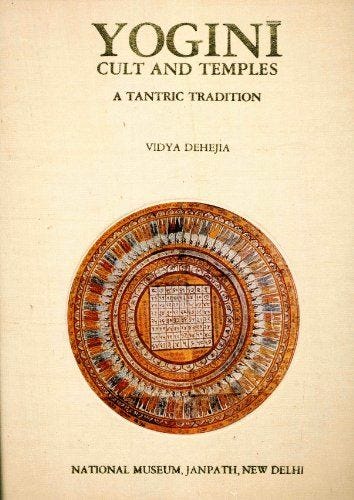

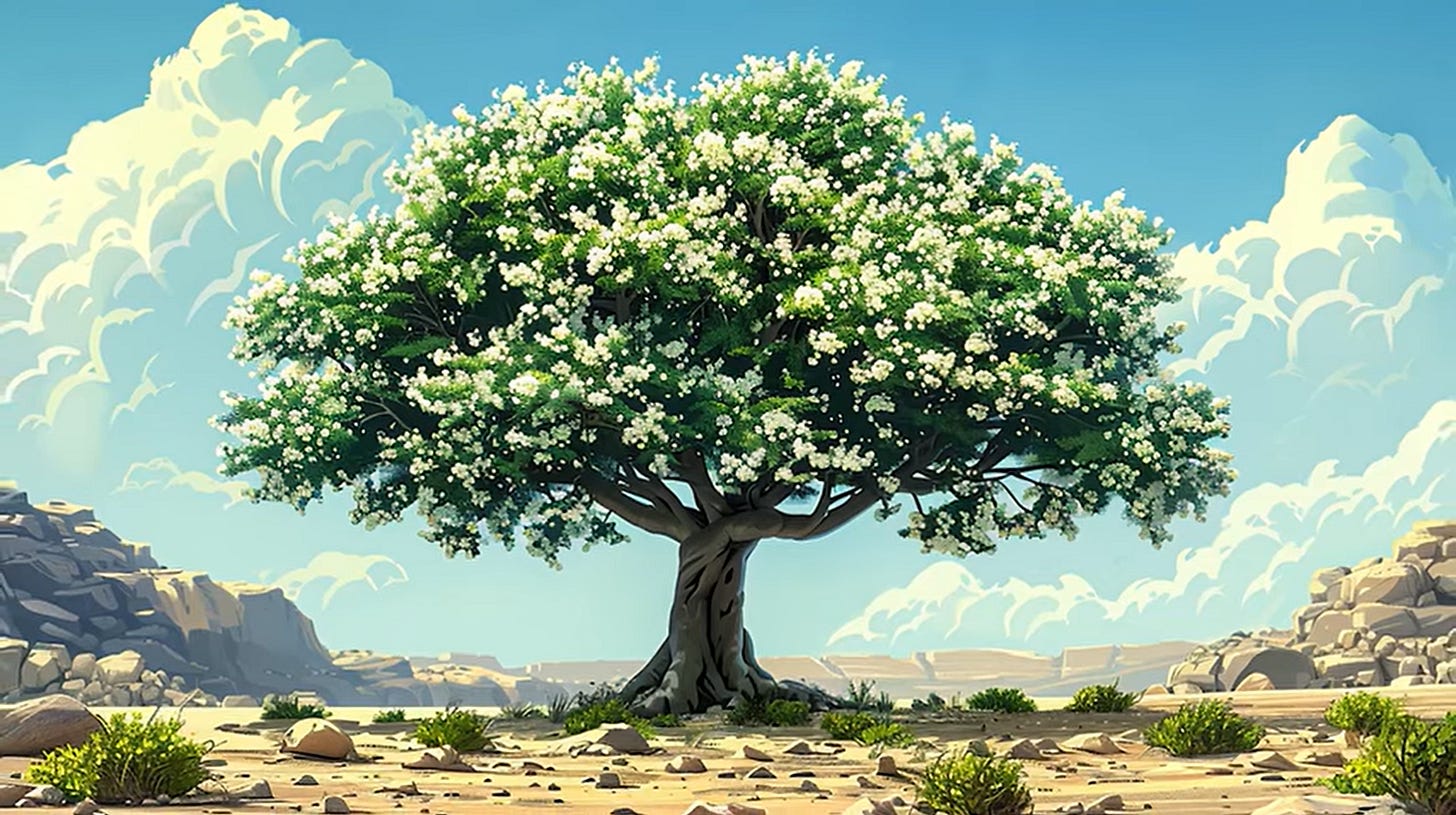





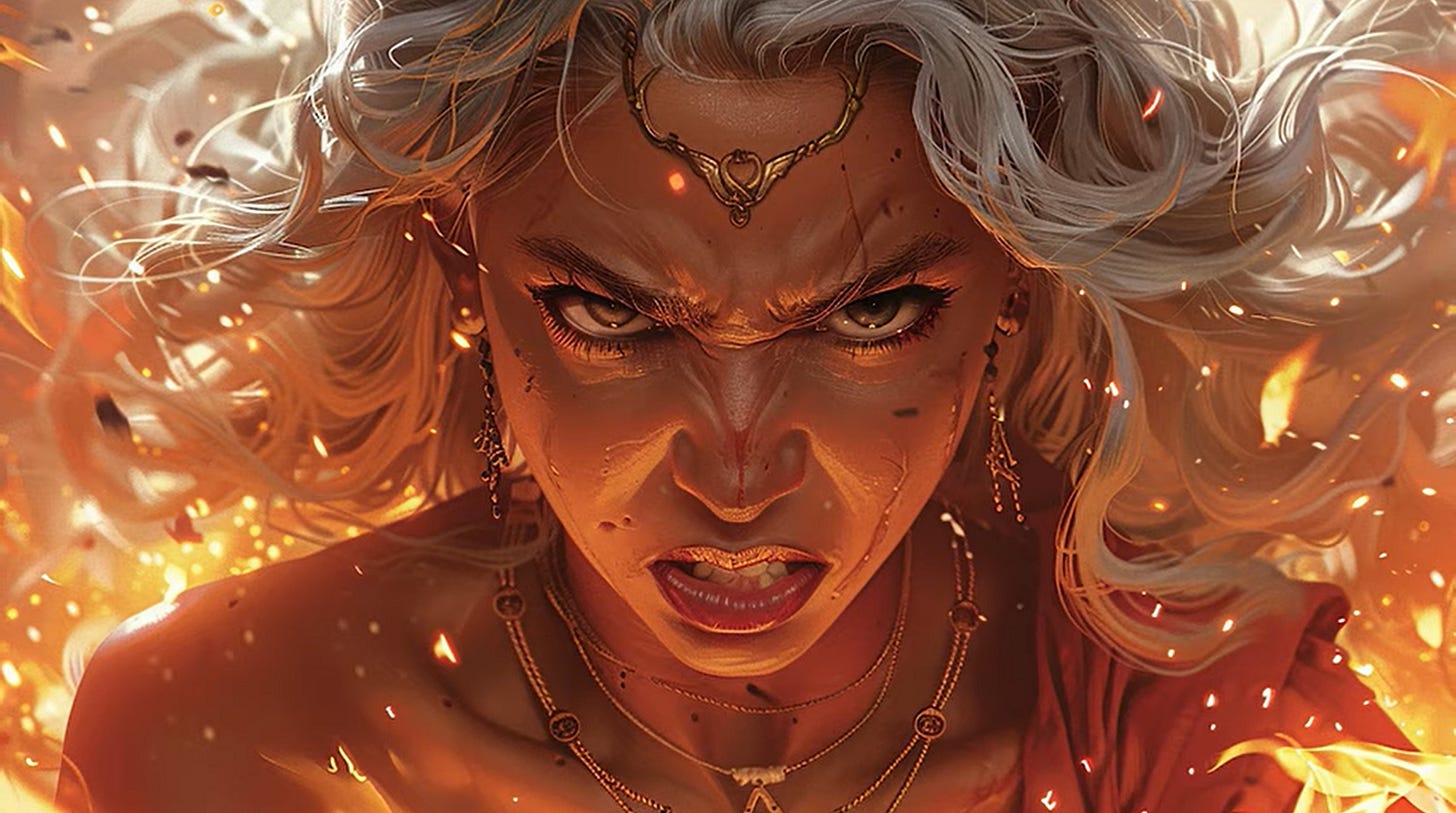




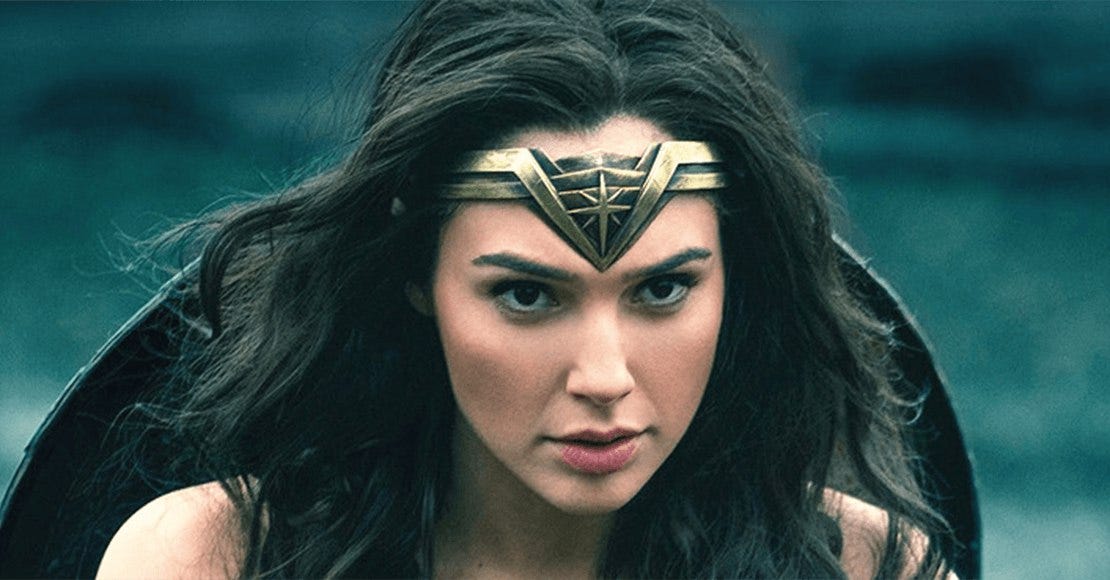

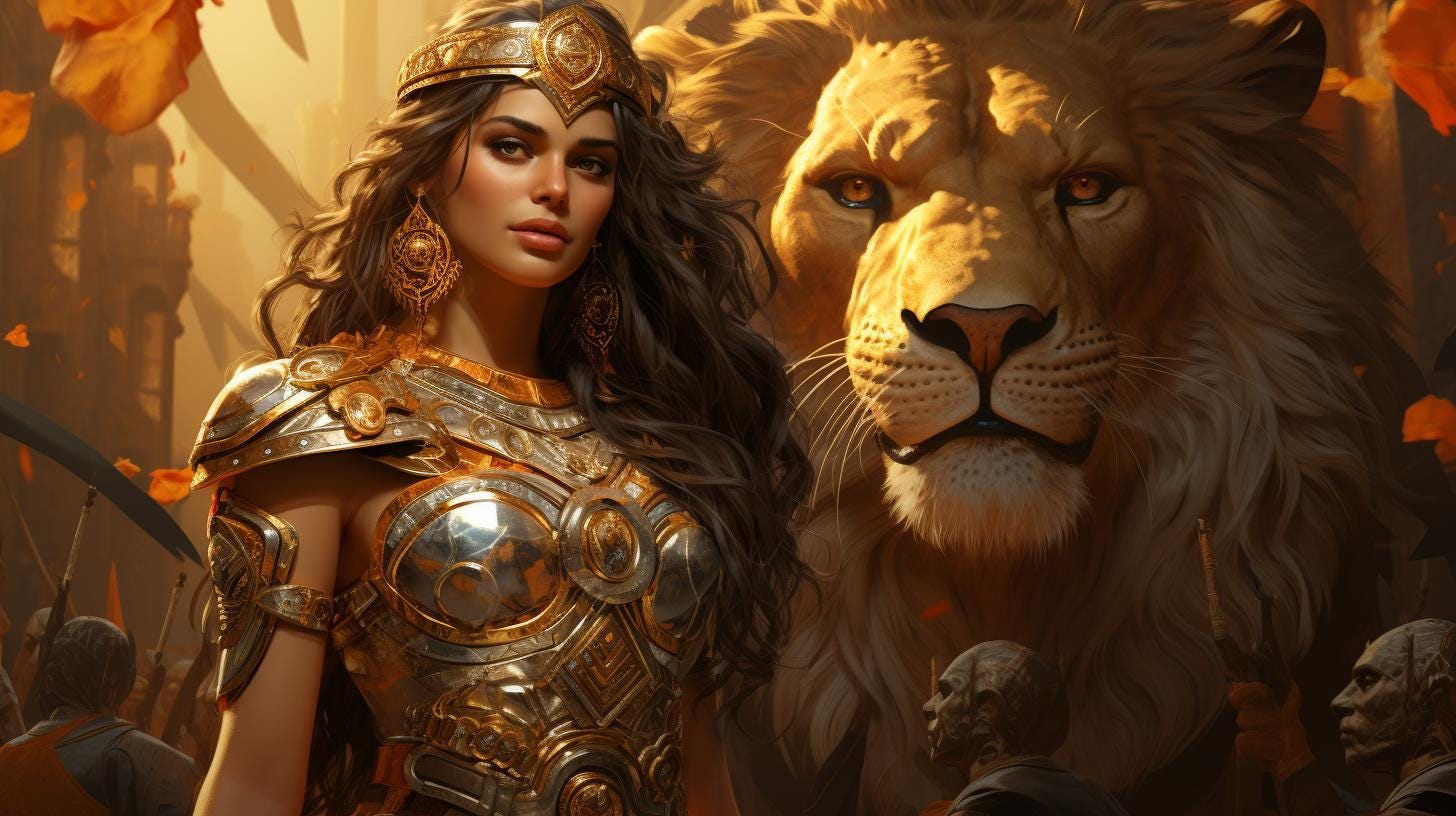




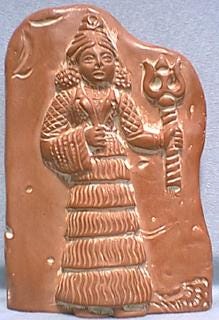


That is excellent.
Here is another layer that You may find interesting;
https://fartbackpack.substack.com/p/the-wierdest-conspeewuhssee-you-have
Also, the Hopi word for the Modern World is Koyanisqatsi ( Koy-On-Iss-Kot-See), which means "World upside down" or "Life upside down". Enjoy
Thank you for all the very well researched articles❣️